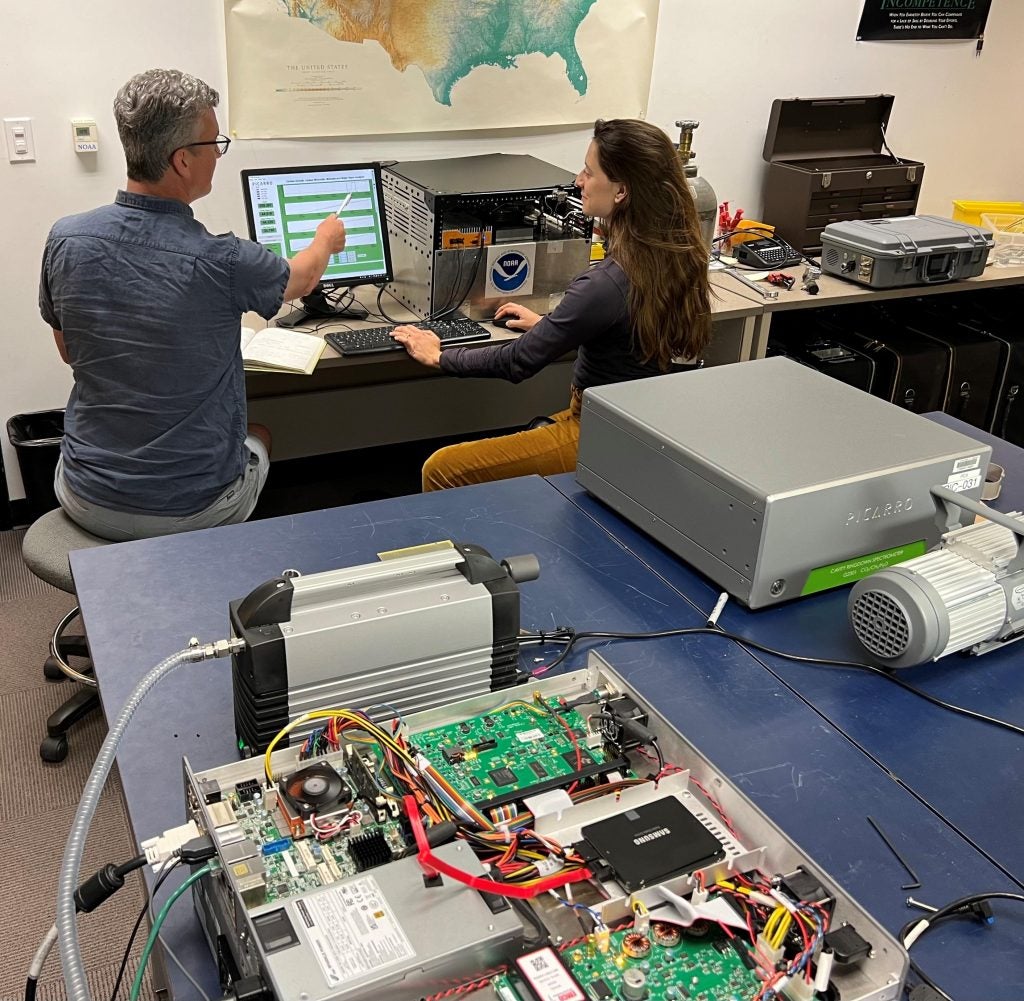
United Airlines and the US government agency National Oceanic and Atmospheric Administration have agreed to a partnership that will see a United passenger jet fitted with atmospheric testing equipment.
The Administration and airline will install a “sophisticated instrument package” to one of United’s domestic 737 fleet, which will measure carbon dioxide, methane and other greenhouse gases (GHG), while boosting meteorologists’ ability to forecast weather in the US.

Discover B2B Marketing That Performs
Combine business intelligence and editorial excellence to reach engaged professionals across 36 leading media platforms.
The initial deal is a test for a “larger network of instrumented commercial aircraft,” according to the government agency.
A wider agreement would allow for a deeper inspection of observations and trends, including water vapour above metropolitan regions. The newly signed deal is a “Cooperative Research and Development Agreement (CRADA)” and was unveiled by the Biden administration at the White House.
Speaking at the event, NOAA’s chief scientist explained the importance of the “leap”.
“This collaboration represents a significant leap forward in U.S. efforts to monitor and mitigate greenhouse gas emissions,” said Sarah Kapnick.

US Tariffs are shifting - will you react or anticipate?
Don’t let policy changes catch you off guard. Stay proactive with real-time data and expert analysis.
By GlobalData
“If we can harness the capabilities of commercial aircraft we will be poised to make rapid advancements in the understanding of greenhouse gas emissions that can inform policies,” she added.
While the scientific body already has 60 ground-based atmospheric testing sites, and flies a number of testing missions each month, attaching the same or similar equipment to commercial jets would allow for much more data to be recorded.
Along with its Earth-based centres, NOAA uses satellites to measure atmospheric conditions and pollutant levels, but these are simply not as reliable as direct airborne tests.
Colm Sweeney, Global Monitoring Laboratory’s commercial aircraft program lead, said the costs would be 99% lower than using specific research flights.
“We’ll be collecting data over multiple cities multiple times a day, in different seasons, and under varying weather conditions. This will allow scientists to more accurately measure U.S. emissions at sub-regional scales, which is one goal of a national greenhouse gas monitoring strategy announced earlier this year, and at just 1% of the cost of deploying research aircraft,” Sweeney said.





